In December 1872, the brigantine Mary Celeste was found adrift in the Atlantic, completely deserted. Her lifeboat was missing, but everything else seemed undisturbed: a hot meal was on the table, cargo intact, and valuables untouched. This discovery sparked one of history’s greatest maritime mysteries. Despite numerous investigations and countless theories ranging from piracy and mutiny to natural phenomena like waterspouts or seaquakes, no definitive explanation for the crew’s vanishing has ever been found. The story of the Mary Celeste remains an enduring enigma, a testament to the ocean’s unforgiving power and the unknown fate of 10 souls.
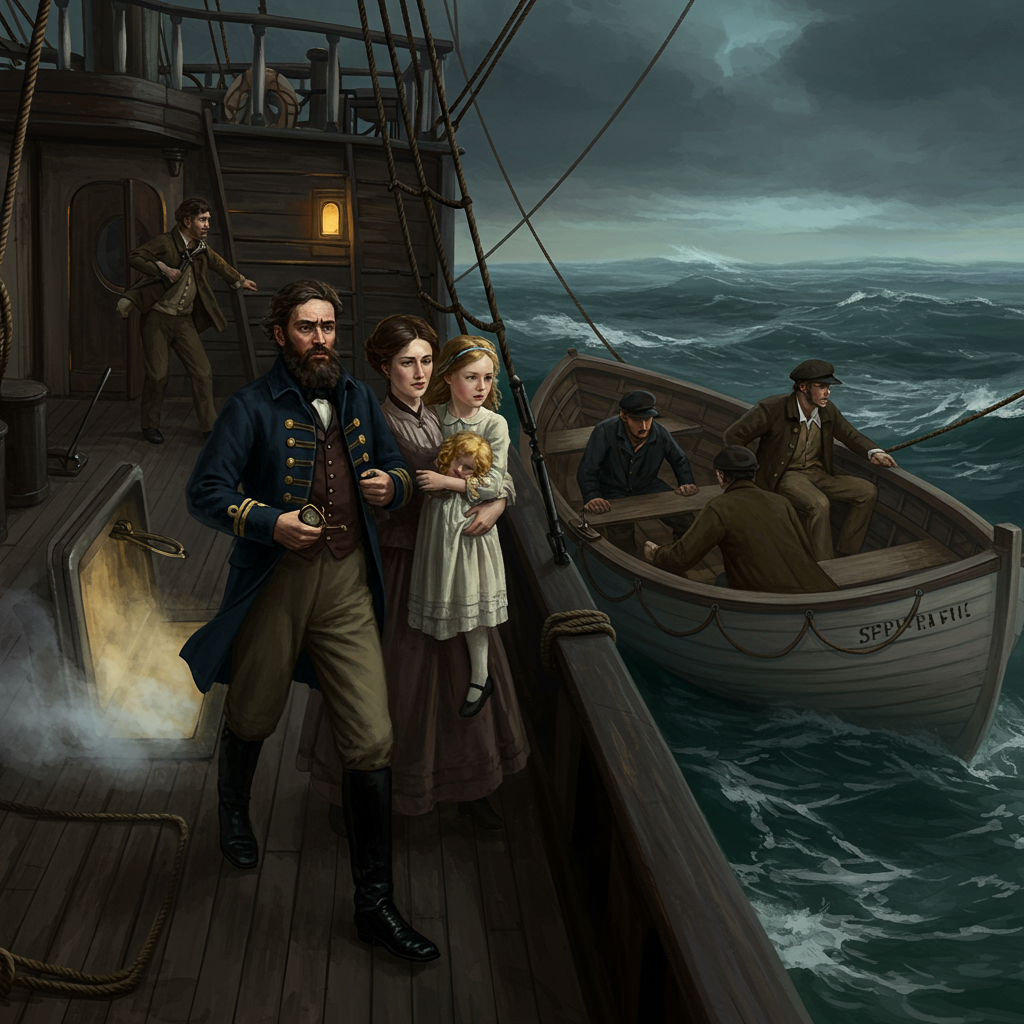
Imagine this: a ship, perfectly sound, drifting silently across the vast Atlantic. Below deck, a hot meal sits ready to be eaten, cargo lies undisturbed, and the captain’s valuables remain safely locked away. Nothing seems amiss. Except for one chilling
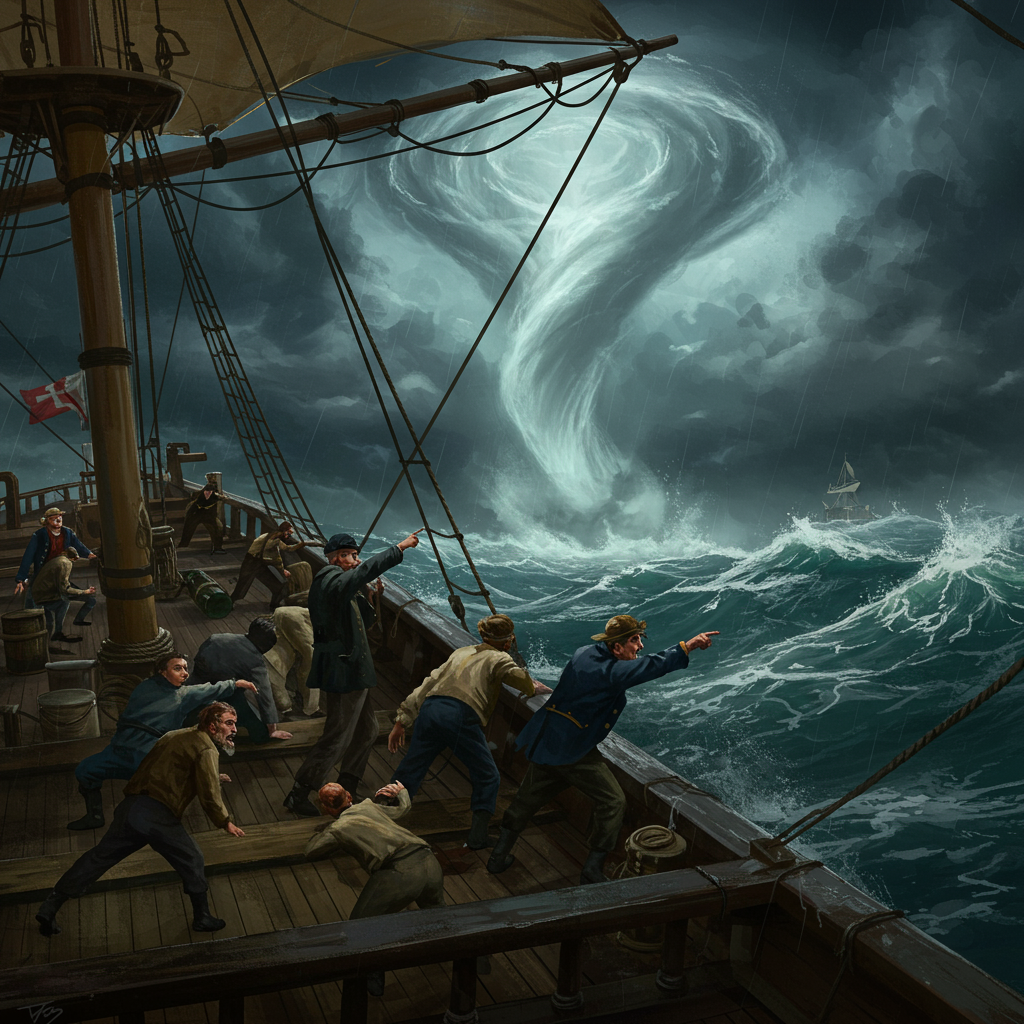
detail: every single soul aboard has vanished without a trace, leaving behind only the ghost of a journey frozen in time.

Welcome back, seekers of the unexplained. Today, we’re diving deep into one of history’s most enduring maritime puzzles: the mystery of the Mary Celeste, a ghost ship whose crew simply… disappeared. By the end of this journey, I guarantee you’ll view the boundless power and unfathomable secrets of the ocean in an entirely new light. If you’re captivated by the unsolved enigmas that haunt our past, do me a favor and hit that subscribe button now so you don’t miss our next dive into the unknown. So, let’s step aboard this deserted brigantine, and begin to unravel the chilling tale of the Mary Celeste.
And so, with that chilling thought, we sail into the heart of our story, to the very moment this mystery began to unfold.
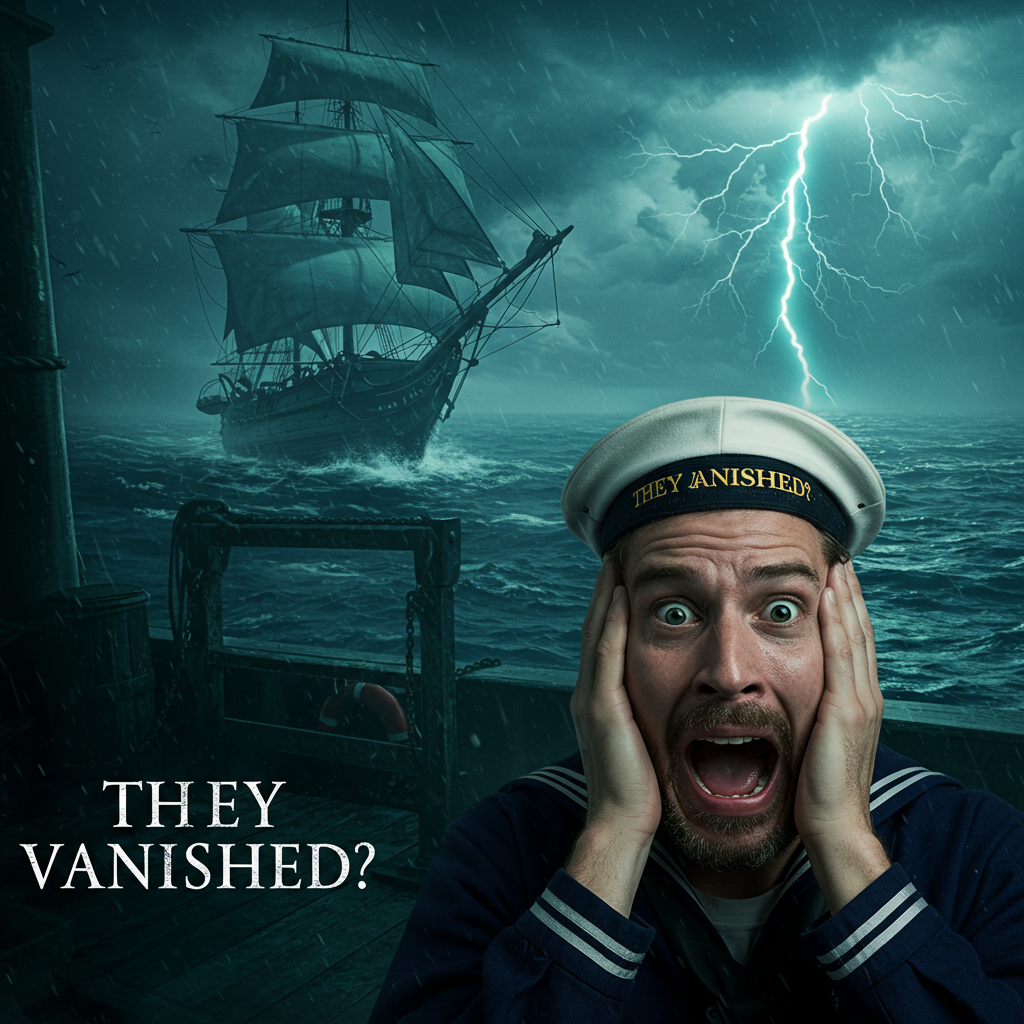
Imagine, if you will, the vast, shimmering expanse of the Atlantic Ocean on a calm, late afternoon in December of 1872. The brigantine *De Gratia*, under the seasoned command of Captain David Morehouse, was making steady progress on its journey from New York toGibraltar. The sun dipped low, casting long shadows across the waves, and a peaceful rhythm settled over the vessel.
Then, something unusual caught the eye of the helmsman, and soon after, Captain Morehousehimself. On the horizon, about six hundred miles west of the Azores, another ship appeared. It was a brigantine, much like their own, but she was behaving strangely. Her sails, in places,were torn and flapping uselessly in the gentle breeze, yet others were set in such a way that she seemed to be sailing erratically, without purpose. More importantly, there was no flag of distress, no sign of human activity on herdeck, even as the *De Gratia* drew closer.
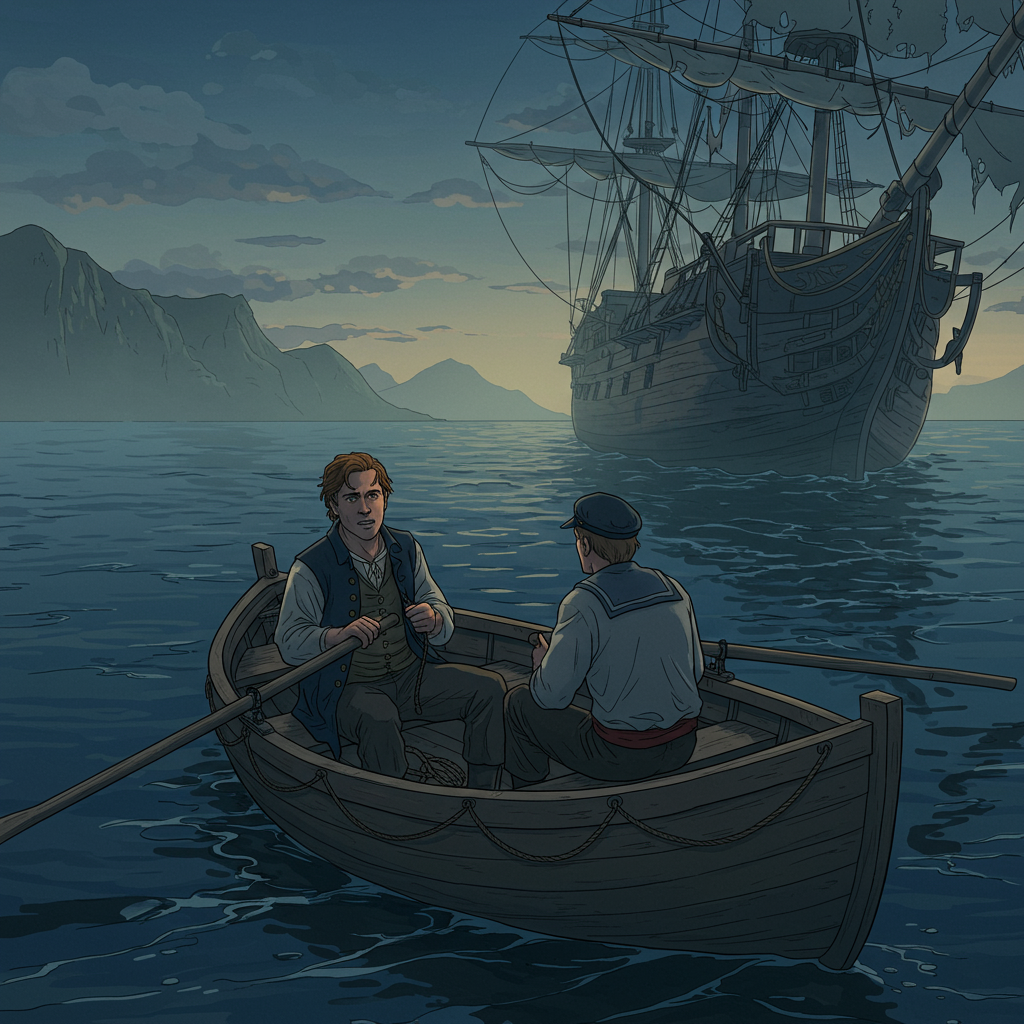
A growing sense of unease settled over the crew of the *De Gratia*. This wasn’t the natural drift of a vessel atsea; this was something altogether more unsettling. Captain Morehouse, a man known for his calm demeanor and keen eye, recognized the vessel as the *Mary Celeste*, a ship he knew well, having dined with her captain, Benjamin Briggs, just weeksbefore in New York.
As the *De Gratia* closed the distance, the silence from the other ship was deafening. No answer to their hails. No movement on deck. A true ghost ship. CaptainMorehouse, his heart likely thumping a little faster in his chest, ordered a small boarding party to investigate. Oliver Deveau, the chief mate, along with two of his crewmen, cautiously rowed across the placid water to the silentbrigantine.
Stepping aboard the *Mary Celeste* was like entering a dream frozen in time. The deck was empty, save for the flapping canvas and the gentle creak of the ship. Below deck, the eerie tableau continued. The captain’s cabin was undisturbed; his navigation instruments—a chronometer and sextant—were conspicuously absent, alongside the ship’s papers, but his personal effects, his pipe, hisrazor, even his valuable sword, remained. In the galley, a sewing machine stood with fabric still threaded, ready for the next stitch. A hot meal sat unfinished, as if the diners had simply stepped away for a moment. Cargo, seventeen hundred barrels of industrial alcohol, was found undisturbed and largely intact in the hold. There was no sign of a struggle, no blood, no obvious damage from a storm, and certainly no pirates. The ship’s solitary lifeboat, however, was gone.
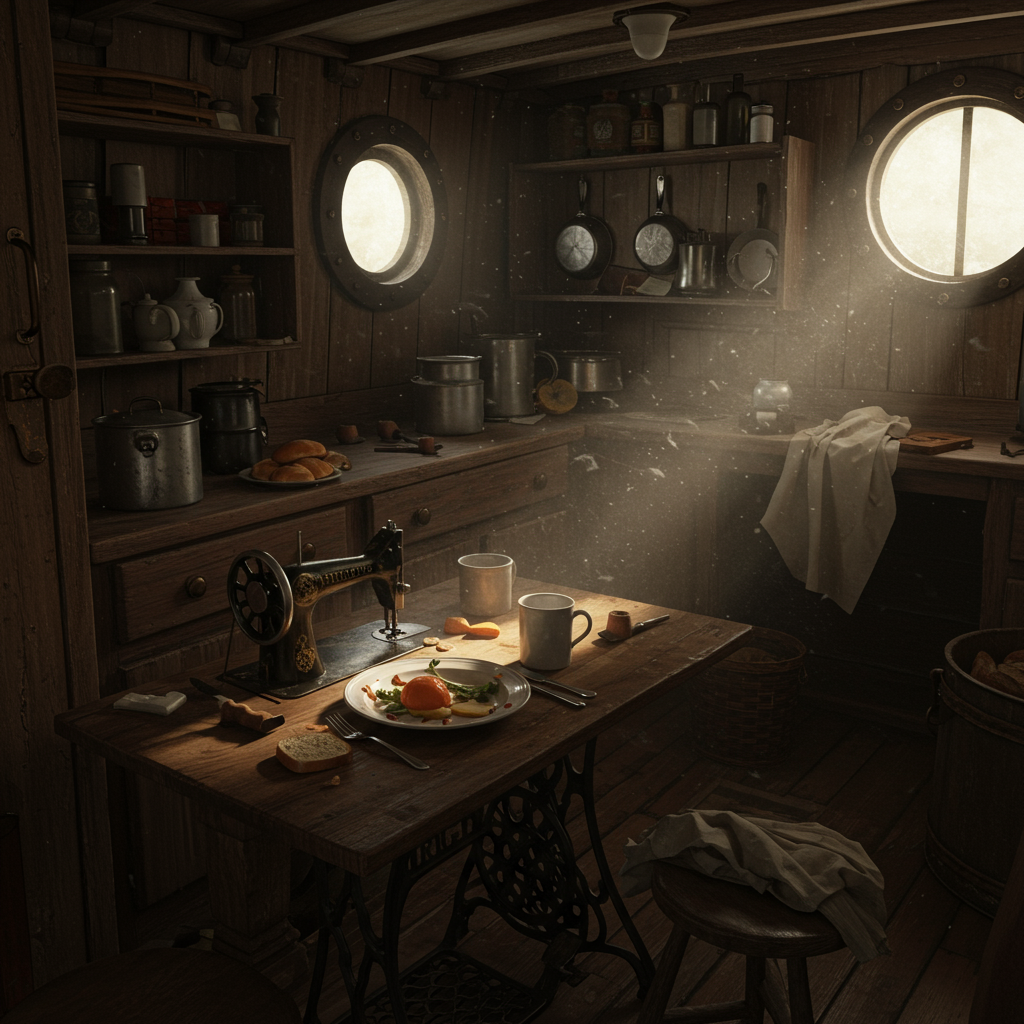
The last entry in the logbook was dated November 25th, nine days before her discovery, placing her roughly a hundred miles west of where she was found. In that nine-day interim, every single soul aboard had vanished,leaving behind a perfectly seaworthy vessel, an untouched meal, and a chilling void. The *Mary Celeste* was an enigma, a puzzle adrift on the vast, indifferent sea.
Fora ship found in such a mysteriously abandoned state, it perhaps comes as no surprise that the *Mary Celeste* had a past steeped in what some might call misfortune, almost as if she were destined for an unusual fate. Built in Nova Scotia,Canada, in 1861, she was originally christened the *Amazon*. Her maiden voyage, intended to be a proud inaugural journey, quickly turned somber. Her first captain fellgravely ill during the trip and tragically died at sea, an ominous start to the ship’s career.
The ill omens continued to gather around the *Amazon*. Shortly after, she was involved in a collisionin the English Channel, an accident that caused significant damage but, thankfully, no loss of life. Later, she ran aground off the coast of Maine, requiring extensive repairs. She was sold and resold severaltimes, each ownership seemingly accompanied by some new misfortune, including a rumored mutiny among her crew at one point.
It was in 1868 that she finally received a new name, one that wouldforever be etched into the annals of maritime mystery: the *Mary Celeste*. This renaming was, perhaps, an attempt to shed her reputation for bad luck, to start anew. She underwent a significantrefit in New York and was eventually purchased by a group of investors, including Captain Benjamin Briggs, a man of excellent repute, known for his skill and integrity. Despite her checkered past, by the time of herfateful voyage, the *Mary Celeste* was considered a sound, well-maintained brigantine, a reliable cargo vessel perfectly capable of trans
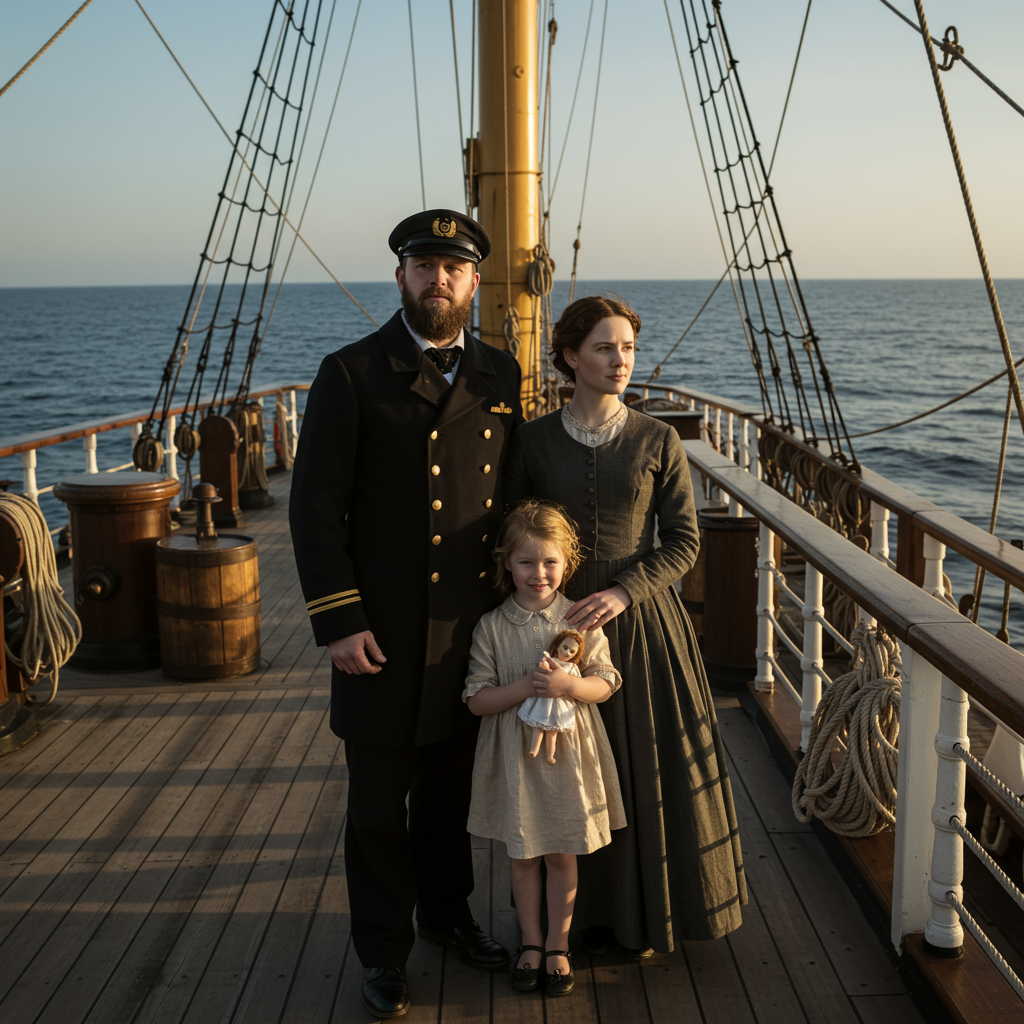
atlantic crossings. She was robust, her timbers strong, and her recent overhaul had made her a ship fit for the openocean. Yet, the shadows of her past seemed to linger, waiting for the moment to weave her into the fabric of an unsolvable mystery.
With a ship seemingly redeemed from its pastmisfortunes, the stage was set for the voyage that would forever define the *Mary Celeste*. It was November 1872, and New York Harbor buzzed with the usual activity of a bustling port. Captain Benjamin S. Briggs, a respected anddevout man of 37, was preparing his vessel for a transatlantic journey. This was not merely a professional trip; it was a family affair. Accompanying him were his wife, Sarah Elizabeth Cobb Briggs, and theirtwo-year-old daughter, Sophia Matilda. Their seven-year-old son, Arthur, remained ashore with his grandmother, a decision that would unknowingly save his life.
The crew consisted of seven experienced sailors: twomates, Andrew Gilling and Albert Richardson, a steward named Edward Head, and four German seamen—Volkert Lorenzen, Arian Martens, Boyse, and an unnamed seaman. All were considered capable and dependable mariners.The cargo was 1,701 barrels of denatured alcohol, intended for industrial use in Genoa, Italy. While seemingly innocuous, this cargo, particularly in the confined andpotentially volatile environment of a ship’s hold, would later become a focal point of speculation.
On November 7, 1872, the *Mary Celeste* weighed anchor and set sail from New York, heading eastward acrossthe vast Atlantic. It was a routine departure for a routine voyage, one that Captain Briggs and his crew had undertaken countless times before. Just eight days later, on November 15th, the *MaryCeleste* crossed paths with the *De Gratia* off the coast of the Azores. Captain Morehouse of the *De Gratia* even recalled seeing Captain Briggs wave to him from the deck of the *Mary Celeste* at the time. Thisdetail, seemingly insignificant then, would later become a poignant reminder of their last known encounter.
The last entry in the *Mary Celeste*’s logbook, found later, was dated November 25th. It recordedthe ship’s position as being off Santa Maria Island in the Azores. From that moment, for the next nine days, the *Mary Celeste* sailed onward, not into history, but into a profound andimpenetrable silence. When she was discovered on December 4th, perfectly sound, her cargo secure, her supplies plentiful, there was no distress, no wreckage, no signs of a struggle. Just an emptiness so absolute, it defies easy explanation. The entirecomplement of eleven souls—Captain Briggs, his wife, his daughter, and his eight crewmen—had simply vanished into the boundless embrace of the Atlantic, leaving behind only the chilling question: *why*?: Investigations and Initial Theories
When the *De Gratia* brought the *Mary Celeste* into the port of Gibraltar on December 12, 1872, the mystery surrounding the abandoned brigantine immediately ignited intense public and officialscrutiny. A salvage inquiry was promptly launched, overseen by Frederick Solly Flood, the Attorney General for Gibraltar, a man known for his meticulous, if sometimes overly zealous, approach.
Flood,convinced from the outset that foul play was involved, embarked on an investigation fueled by suspicion. He meticulously inspected the ship, pointing to apparent bloodstains on the captain’s sword and peculiar marks on the bow as evidence of a violent struggle. His theory was grim: a mutiny, perhaps, or a violent act committed by the crew against Captain Briggs and his family, leading to their demise and the subsequent abandonment of the vessel. He even suggested that the *De Gratia*’s crew, particularly Captain Morehouse, might have been involved in a conspiracy, possibly to claim a substantial salvage award.
However, as the inquiry progressed, many of Flood’s initial conclusions began to unravel. The “bloodstains” on the sword were later identified, quite prosaically, as rust. The supposed “marks of violence” on the bow were determined to be nothing more than normal wear and tear ona wooden vessel at sea. The ship itself, after a thorough examination, was found to be perfectly seaworthy, with no significant damage that would necessitate an immediate, panicked abandonment. The cargo, while containing volatilealcohol, was also largely intact, with no signs of a major explosion or fire.
Yet, crucial pieces of the puzzle remained maddeningly absent: the captain’s chronometer and sextant, vital navigational tools, were gone.The ship’s papers, save for the logbook, were also missing. And, of course, the lifeboat. These details suggested not a chaotic,forced abandonment, but rather a more deliberate, albeit hasty, departure.
As the official inquiry struggled to find conclusive evidence of foul play, various theories began to circulate, attempting to fill the chilling void left by the vanished crew.
***Piracy** was an early contender, but quickly dismissed. The ship’s cargo was untouched, and valuables in the captain’s cabin remained. Pirates would have plundered, not merely taken the crew.
* **Mutiny** was Flood’s pet theory, but it lacked motive and evidence. Captain Briggs was well-respected, and there were no signs of a struggle or blood.
* **Insurance Fraud** wasalso proposed, suggesting the ship was deliberately abandoned for financial gain. This, too, was discredited, as Captain Briggs was financially stable, and destroying a perfectly good ship with one’s family aboard made no logical sense.
The most plausibletheory to emerge during this initial period centered around the *Mary Celeste*’s volatile cargo: **the alcohol**. It was hypothesized that pressure buildup from the barrels could have led to an explosion, or at least a loud, frightening noise and a burstof fumes. This might have caused Captain Briggs to order a temporary evacuation into the lifeboat, perhaps tethered to the ship, until the danger passed. This theory was bolstered by the fact that the bung of oneof the barrels was found on deck, suggesting an attempt to relieve pressure. Such a scenario would explain the missing lifeboat, the intact ship, and the orderly removal of navigational instruments—preparation for temporary detachment. However, what happened next to thelifeboat and its occupants remained an agonizing unknown.
Despite exhaustive investigations and countless theories, no definitive, universally accepted explanation for the vanishing of the *Mary Celeste*’s crew hasever been found. The initial inquiries, hampered by limited forensic capabilities and a tendency towards sensationalism, ultimately closed with no satisfactory conclusion, leaving the brigantine’s fate shrouded in an enduring mystery.
In the decades and centuries since,the case of the *Mary Celeste* has captivated imaginations, giving rise to numerous modern speculations, each attempting to fill the haunting void left by the eleven vanished souls. The most widely accepted and compelling theory remains an elaboration on the alcohol cargo hypothesis. It posits that the volatile industrial alcohol, perhaps due to a buildup of fumes in the ship’s hold or a minor, non-destructive explosion, led to a sudden and overwhelming fear of a catastrophic blast. Captain Briggs, ever the prudent andprotective commander, would have instinctively ordered an immediate, temporary abandonment of the ship.
Imagine the scene: the ship’s internal noises, perhaps a sudden, startling bang from the hold, or the terrifying smell of alcohol fumes permeating the air.In a desperate act to protect his wife, daughter, and crew, Briggs would have ordered them into the ship’s only lifeboat. Crucially, the missing chronometer and sextant suggest an *orderly* rather than a panicked flight. These instruments were essential for navigation should they be forced to abandon ship permanently. The lifeboat was likely tethered to the *Mary Celeste* with a long rope, allowing them to remain close while the danger of an explosion subsided.
However, the unforgiving nature of the open sea would then have played its cruel hand. A sudden squall, an unexpected shift in wind and waves, or a simple, tragic fraying of the rope could have snapped the tether, separating the small lifeboat from the largerbrigantine. The *Mary Celeste*, with her sails partially set, would have drifted away, leaving the occupants of the lifeboat to the mercy of the vast ocean, their fate sealed by exposure, thirst, or the unpredictable currents. This theoryaccounts for the ship’s sound condition, the missing lifeboat and instruments, and the complete absence of any signs of struggle or major disaster.
Other theories, though less prevalent, also continue to surface. Some suggest a sudden, localized seaquake or anenormous waterspout could have struck the *Mary Celeste*, causing such extreme listing or disorientation that the crew abandoned ship in panic, only for the vessel to right itself and drift away. Another, more speculative idea involves contaminated food or water, leading to illnessor even temporary madness, causing the crew to jump overboard. While intriguing, these lack the tangible, circumstantial evidence of the alcohol theory.
The *Mary Celeste* herself, after her dramatic discovery, continued a rather unremarkable existence for another decade, passingthrough several owners before she was deliberately run aground off the coast of Haiti in 1885, in what was believed to be an attempt at insurance fraud. Her physical presence may have ended, but herlegend was just beginning.
From Arthur Conan Doyle’s fictionalized account, “J. Habakuk Jephson’s Statement,” to countless books, films, and documentaries, the *Mary Celeste* has become the quintessential ghost ship, apotent symbol of the ocean’s boundless power and its capacity to swallow secrets whole. She stands as a silent, drifting testament to the enduring mysteries of the sea, a riddle whispered on the winds, reminding us that some enigmas, truly, are destined to remain unsolved. The story of the *Mary Celeste* isn’t just about a ship and her vanished crew; it’s about our enduring fascination with the unknown, and the humbling realization that, even in an age of advancedtechnology, some tales are simply meant to be told, and re-told, forever asking the same haunting question: what truly happened?
And so, the story of the *Mary Celeste* continues to drift across the centuries, much like the brigantine herself, a phantom vessel sailing through our collective imagination. We speak of Captain Briggs, his wife Sarah, and their young daughter Sophia, of their hopes and dreams embarking on that fateful voyage. We ponder the fear and the desperate decisions that might have been made in the face of an unseen threat. But the Atlantic, vast and unforgiving, holds its secrets close. It offers no confession, no final explanation. All that remains is the echoing question, carried on the salt spray and whispered by the winds: what truly happened aboard the *Mary Celeste*? Perhaps, in the end, the enduring power of this tale lies not in finding a definitive answer, but in its very elusiveness. It reminds us that there are forces beyond our full comprehension, mysteries that humble us, and stories so profound, so utterly human, that they are destined to be told again and again, forever inviting us to look out at the horizon and wonder.
Thank you for joining us on this journey into the unknown. If you’ve been captivated by the secrets of the sea and the tales whispered through time, please consider subscribing to History Uncovered. We delve into history’s most intriguing enigmas, bringing forgotten stories to life. And if you’re eager for more maritime mysteries, you might enjoy our episode on the disappearance of the *Cyclops*. Until next time, keep exploring, keep questioning, and keep wondering about the incredible tapestry of our past.